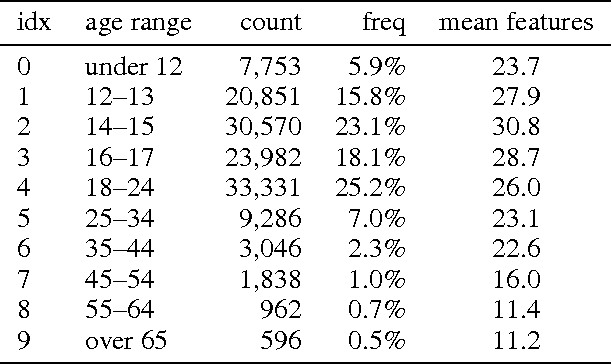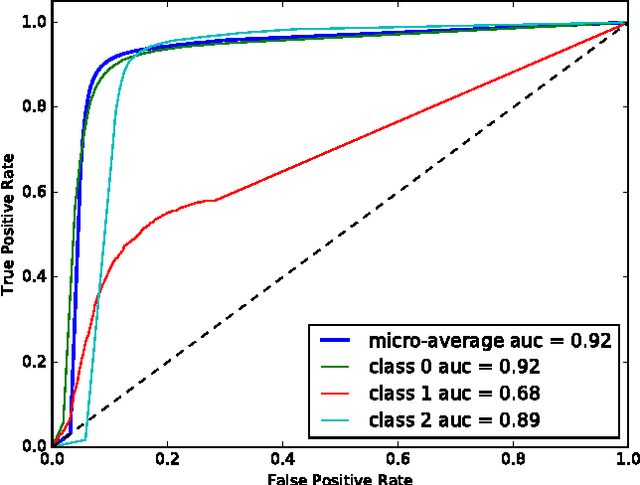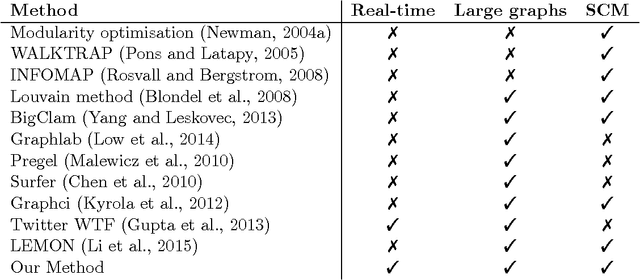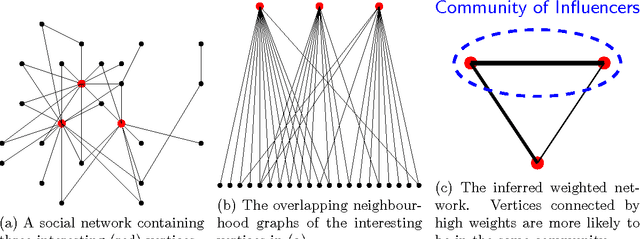Clive Humby
Probabilistic Inference of Twitter Users' Age based on What They Follow
Feb 24, 2017



Abstract:Twitter provides an open and rich source of data for studying human behaviour at scale and is widely used in social and network sciences. However, a major criticism of Twitter data is that demographic information is largely absent. Enhancing Twitter data with user ages would advance our ability to study social network structures, information flows and the spread of contagions. Approaches toward age detection of Twitter users typically focus on specific properties of tweets, e.g., linguistic features, which are language dependent. In this paper, we devise a language-independent methodology for determining the age of Twitter users from data that is native to the Twitter ecosystem. The key idea is to use a Bayesian framework to generalise ground-truth age information from a few Twitter users to the entire network based on what/whom they follow. Our approach scales to inferring the age of 700 million Twitter accounts with high accuracy.
Real-Time Community Detection in Large Social Networks on a Laptop
Sep 04, 2016



Abstract:For a broad range of research, governmental and commercial applications it is important to understand the allegiances, communities and structure of key players in society. One promising direction towards extracting this information is to exploit the rich relational data in digital social networks (the social graph). As social media data sets are very large, most approaches make use of distributed computing systems for this purpose. Distributing graph processing requires solving many difficult engineering problems, which has lead some researchers to look at single-machine solutions that are faster and easier to maintain. In this article, we present a single-machine real-time system for large-scale graph processing that allows analysts to interactively explore graph structures. The key idea is that the aggregate actions of large numbers of users can be compressed into a data structure that encapsulates user similarities while being robust to noise and queryable in real-time. We achieve single machine real-time performance by compressing the neighbourhood of each vertex using minhash signatures and facilitate rapid queries through Locality Sensitive Hashing. These techniques reduce query times from hours using industrial desktop machines operating on the full graph to milliseconds on standard laptops. Our method allows exploration of strongly associated regions (i.e. communities) of large graphs in real-time on a laptop. It has been deployed in software that is actively used by social network analysts and offers another channel for media owners to monetise their data, helping them to continue to provide free services that are valued by billions of people globally.
 Add to Chrome
Add to Chrome Add to Firefox
Add to Firefox Add to Edge
Add to Edge